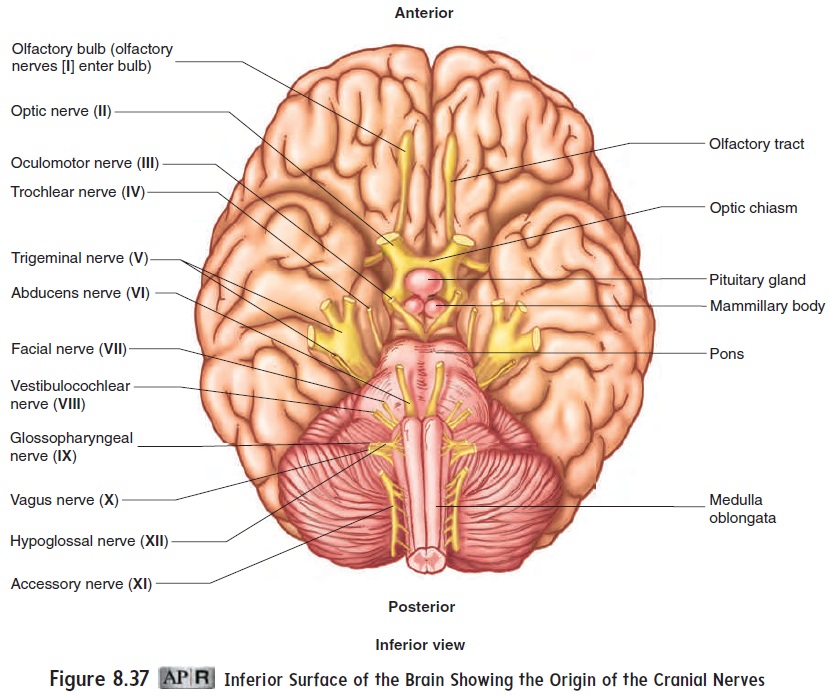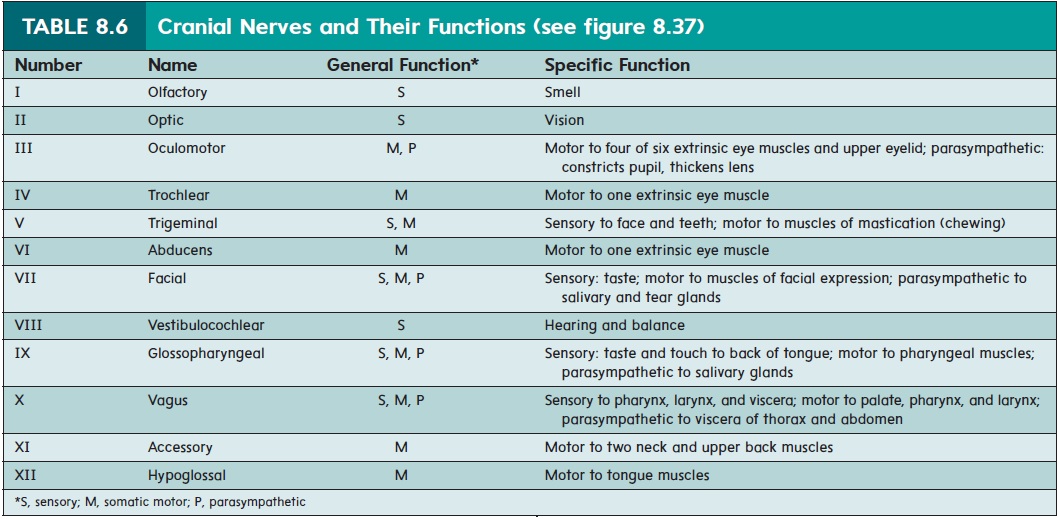Chapter: Essentials of Anatomy and Physiology: Nervous System
Cranial Nerves
CRANIAL NERVES
The 12 pairs of cranial nerves are listed in table 8.6 and pictured in figure 8.37. They are designated by Roman numerals from I to XII. There are two general categories of cranial nerve function: sensory and motor. Sensory functions can be divided into the special senses, such as vision, and the more general senses, such as touch and pain in the face. Motor functions are subdivided into somatic motor and parasympathetic. Somatic motor cranial nerves innervate skeletal muscles in the head and neck. Parasympathetic cranial nerves innervate glands, smooth muscle throughout the body, and cardiac muscle of the heart.

Some cranial nerves are only sensory, and some are only somatic motor, whereas other cranial nerves are mixed nerves with sensory, somatic motor, and parasympathetic functions. Three cranial nerves—the olfactory (I), optic (II), and vestibulocochlear (VIII) nerves—are sensory only. Four other cranial nerves—the trochlear (IV), abducens (VI), accessory (XI), and hypoglossal (XII) nerves—are considered somatic motor only (although these motor nerves do provide proprioceptive information).

The trigeminal nerve (V) has sensory and somatic motor functions. It has the greatest general sensory distribution of all the cranial nerves and is the only cranial nerve supplying sen-sory information to the brain from the skin of the face. Sensory information from the skin over the rest of the body is carried to the CNS by spinal nerves. Injections of anesthetic by a dentist are designed to block sensory transmission through branches of the trigeminal nerve from the teeth. These dental branches of the trigeminal nerve are probably anesthetized more often than any other nerves in the body.
The oculomotor nerve (III) is somatic motor and parasym-pathetic. The facial (VII), glossopharyngeal (IX), and vagus (X) nerves have all three functions: sensory, somatic motor, and para sympathetic (table 8.6). The vagus nerve is probably the most important parasympathetic nerve in the body. It helps regulate the functions of the thoracic and abdominal organs, such as heart rate, respiration rate, and digestion.
As with the spinal nerves, the sensory and motor functions of many cranial nerves cross from one side of the head or body to the opposite side of the cerebral cortex. For example, sensory input from the right side of the face via the trigeminal nerve (V) crosses in the brainstem and projects to the left cerebral cortex. Motor output from the left cerebral cortex crosses in the brainstem to the right side of the face via the facial nerve (VII).
Related Topics